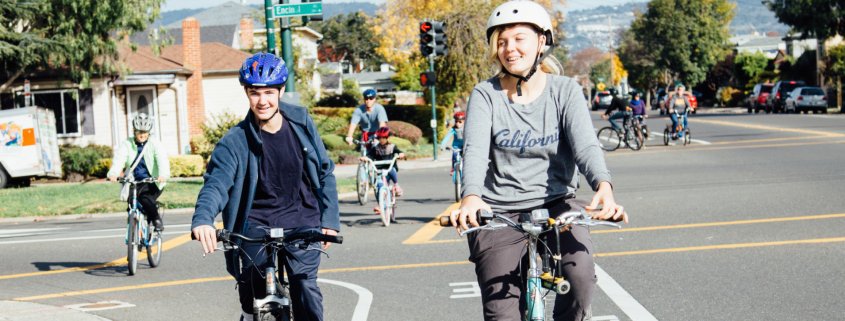Top Ten Ways California’s Bike and Ped Plan Could Revolutionize the State
In January 2014, at the request of Governor Brown, the State Smart Transportation Initiative published an assessment of Caltrans. The report was a scathing indictment, portraying Caltrans as unable to meet the goals of a 21st century transportation agency, and suggesting some radical changes in the way it does business. Within two years, new staff were hired, new design guidelines approved, new procedures implemented and an ambitious new mission was adopted.
California’s Bike and Ped Plan, which Caltrans is currently developing, could have the same impact. Three of CalBike’s staff and board members serve on the plan’s two leadership committees—its steering committee and technical advisory committee—so we will have influence. These are our top ten recommendations for the Plan:
1. Equity should be paramount. Bicycling and walking are low-cost modes that low-income Californians rely on most, so bike/ped programs should prioritize serving disadvantaged communities in order to reap the quickest benefits.
2. This is the California Bicycle and Pedestrian Plan, not just the Caltrans plan. It should address policies not just at Caltrans but at the Department of Motor Vehicles, California Highway Patrol, High-Speed Rail, California Transportation Commission, Office of Traffic Safety, Department of Education, Department of Public Health, Air Resources Board, Visit California, and more.
3. The state needs better design guidance. Caltrans should just continue the great progress it has made in the last two years.
4. The state should incentivize more aggressive development of bike and pedestrian networks. In most communities, many of our streets are safe for biking but to get where we need to go, we have to ride on a dangerous stretch. The state should incentivize communities to build complete networks.
5. Caltrans needs a Division of Active Transportation to exercise stronger leadership from headquarters. Caltrans has significant expertise on walking and bicycling but it’s scattered about at low levels in the huge bureaucracy. Executive experts will resolve internal disagreements that currently result in stagnation; they will initiate creative change and challenge bad district-level decisions. This idea was advanced by Senator Jim Beall in SBX-1.
6. Develop a Path to Universal Bike Education. Most bicycle-friendly countries provide universal education in bicycle transportation for children. California should do the same.
7. Expand bike sharing everywhere. Public bike share systems are a fast and cost-effective way to make bicycling a realistic option for short trips, but it needs state support to expand into every community, to be accessible and affordable for low-income users, and to ensure consistent, compatible payment systems.
8. State-operated trains and stations should be exemplary in their bike-friendliness. Most transit systems are locally operated, but the state does operate several intercity rail lines. The stations that serve those lines should never, ever, be lacking secure bike parking; and the state’s commuter lines should always allow bikes on board.
9. The state should develop a bicycle purchase incentive program to leverage great benefit from a small investment. For many, especially low-income people, the bike seems like a slow and arduous way of getting around. High-quality bikes and electric bikes can change that perception; for a very small investment in bike subsidies, the state can help people overcome that perception and transform the lives of thousands of people and their communities.
10. Every funding dollar spent should be viewed as a potential opportunity to improve the biking and walking environment. Project programming and development processes must change to ensure every new road and maintenance activity includes consideration of biking and walking improvements.



